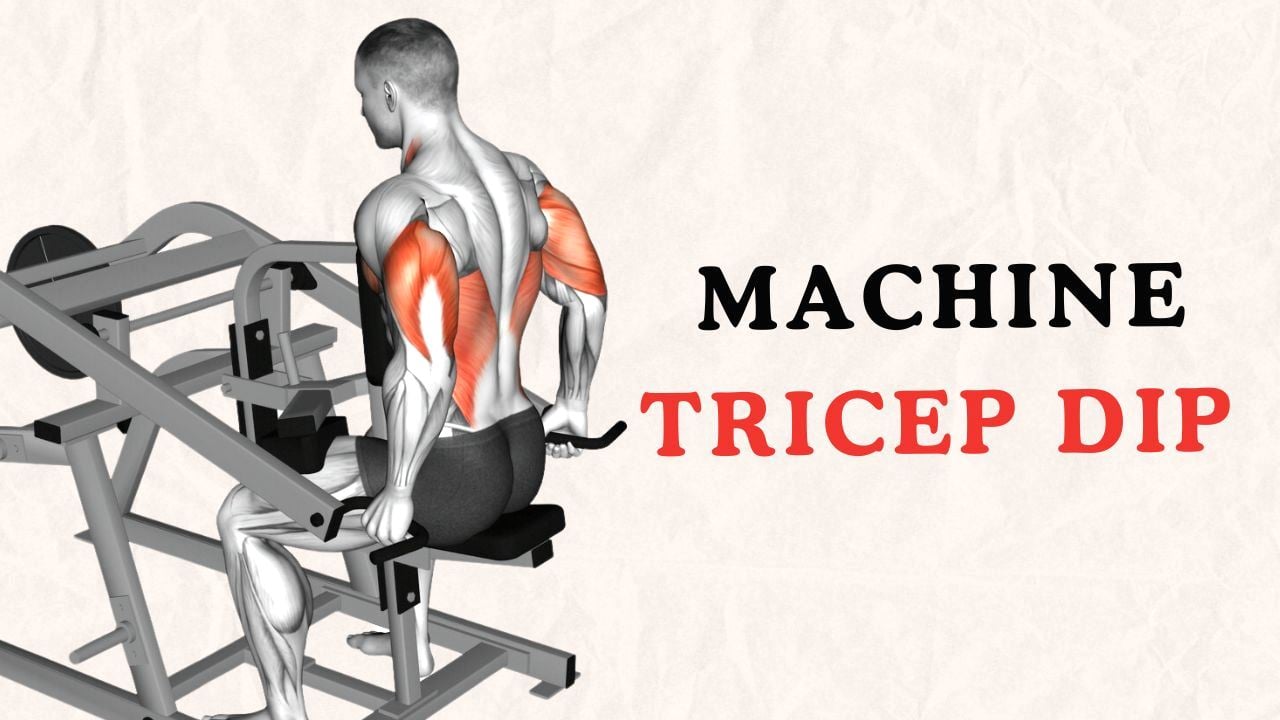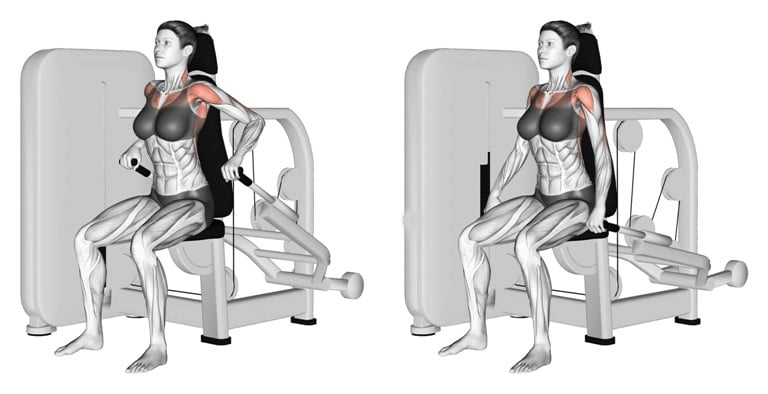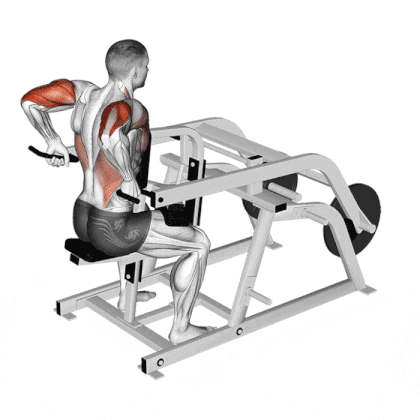Many gym-goers want to build bigger, stronger triceps to get well-defined arms. But it can be tricky to fully isolate the triceps during presses or dips. That’s where the machine triceps dip comes in.
The tricep machine dip is a type of strength training equipment designed to work the triceps muscles.
The machine tricep dip machine is a variation of the traditional tricep dip that uses a machine instead of body weight to provide resistance. It provides a more controlled and isolated environment than a parallel bar dip. It minimizes the use of the chest, shoulders and back.
It is an excellent exercise for beginners who want to bigger and stronger arms.

Machine Tricep Dip Muscles Worked
The machine tricep dip primarily targets the triceps but also engages the chest and shoulders to a lesser extent.
Primarily Muscles Worked
The triceps brachii is primarily responsible for arm extension. It consists of three distinct heads: When performing the machine tricep dip, all three heads of the triceps are engaged.
- Long Head: Originates at the scapula (shoulder blade) and runs down the back of the arm.
- Medial Head: Located in the middle section of the triceps, beneath the long and lateral heads
- Lateral Head: Found on the outer side of the arm.

Secondary Muscles Worked
- Pectoralis Major (Chest): The lower fibers are especially engaged during the dip movement. Much lesser degree than the triceps.
- Anterior Deltoid (Front of the Shoulder): This muscle assists slightly in the dip movement. Especially when there’s a forward lean in some variations.
- Rhomboids and Latissimus Dorsi: These back muscles might play a stabilizing role.
How To Do Machine Tricep Dip
- Sit down on a dip machine and place your feet on the footrests.
- Ensure that when you sit, your hands are level with your shoulders or slightly below.
- Keep your elbows close to your body and grasp the handles with a neutral grip.
- Some machines might offer different grip variations; choose the one that’s most comfortable.
- Push the handles down by extending your arms. Ensure the motion is controlled and steady.
- Focus on squeezing your triceps hard to get a good contraction.
- Slowly bend your elbows until they are close to parallel to the floor.
- Complete another repetition by extending your arms down again.
Training Tips and Form
- Keep your arms close to your body throughout the exercise (elbows facing back).
- If your elbows go out to the side during the movement, you will be able to lift more weight. However, this is only because you have better leverage; your arms are not getting stronger.
- Maintain an upright torso position throughout the movement. Leaning forward can reduce the effectiveness of the triceps activation and increase strain on the shoulders.
- Maintain a slow and controlled tempo during both the lowering and raising phases. This increases time under tension.
- At the bottom of the movement, focus on keeping your arms slightly bent to maintain tension on the triceps muscle.
- Beginners start with 2-3 sets of 8-12 reps. Intermediate/Advanced: 3–5 sets of 8–15 reps, adjusting the weight as needed.
- Start with light loads before working with very heavy loads.

Benefits Of Machine Tricep Dip
- Isolates and focuses on the triceps effectively.
- Reduced injury risk due to controlled and guided motion.
- Provides steady resistance throughout the entire movement.
- Suitable for all levels, from beginners to advanced.
- It helps maintain proper form, especially for novices.
- Easy to adjust and track weight increments.
- It offers a stable platform, reducing strain on stabilizing muscles.
- Many machines offer multiple grip positions for varied workouts.

Manish is a NASM-certified fitness and nutrition coach with over 10 years of experience in weight lifting and fat loss fitness coaching. He specializes in gym-based training and has a lot of knowledge about exercise, lifting technique, biomechanics, and more.
Through “Fit Life Regime,” he generously shares the insights he’s gained over a decade in the field. His goal is to equip others with the knowledge to start their own fitness journey.
